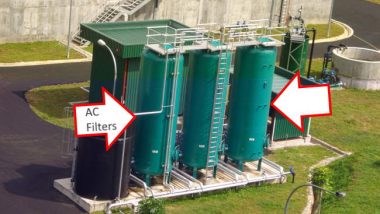The advantages of anaerobic digestion are many and varied. We pick out those that have the biggest impact, and are most often quoted. Anaerobic digestion technology produces benefits that are both environmentally and financially sustainable. By reducing fossil fuels the technology reduces the need for fossil fuels, and in this way is inherently a climate change reducing technology.
The technology utilises various organic wastes to create biogas and solid and liquid digestate.
Well Known Advantages of Anaerobic Digestion as a Source of Energy
Biogas can used as electricity or for heating, and can be upgraded to make renewable natural gas.
Solid digestate, produced from the advantages of anaerobic digestion of biomass, can used for animal bedding, composting, etc.
Liquid digestate is used for land application as fertiliser
The process of anaerobic digestion occurs when oxygen is removed from biodegradable waste material storage facilities. This forces the naturally present micro-organisms to break down the material, creating methane and other gases.
AD can be Applied to a Wide Range of Biomass Types
Almost any biomass can be processed in AD.
That includes food waste, energy crops, crop residues, slurry and manure. AD can accept waste from our homes, supermarkets, industry and farms, meaning less waste will go to landfill.

The treatment of biodegradable waste in this way, by sending it to biogas plants also helps to reduce the organic matter which goes into landfills.
This reduction of the material in landfills which can make landfill gas, reduces the amount of climate changing gas emitted by landfills into the atmosphere. In other words, through using AD and putting the gasses produced by biogas plants, alternative fuels for power are created.This helps by replacing the use of fossil fuels.
The material left over at the end of the process is rich in nutrients so it can be used as fertiliser.
Through continued investment in the latest technology, the biogas industry is developing AD plants as a means of reducing not only our own carbon footprint, but those of landfill sites across the UK.
Anaerobic Digestion as a Source of Energy
According to the World Biogas Association, if all the world's domestic and commercial food waste was processed by Anaerobic Digestion, it would generate enough electricity for 112 to 135 million people.
The management of organic material through anaerobic digestion has many offerings outside the gas and energy production. Gas production and energy potential typically dominate the spotlight in the anaerobic digestion (AD) technology world, while benefits of residues and nutrient management from AD are overshadowed.
However, utilising AD residues and considering the value of properly managing nutrients, such as phosphorus, may make-or-break projects which would be considered uneconomical based on energy production value alone.
Anaerobic Digestion as a source of Natural Fertiliser
Nutrient management benefits from digestion should be considered to help keep residuals on the positive side of the balance sheet. For example, agricultural waste management is typically not considered to be a farm income source. But, by using the anaerobic digestion process it can greatly reduce fertiliser costs, and in that way contribute to the profit of any farm.
Monetizing the benefits in terms of waste removal and disposal cost saved, or value as fertiliser is vital. But, it can be hard to achieve. It become much easier when a biogas plant is integrated into a farm or food processing business. A full spectrum of valuable nutrients and minerals can be captured from Anaerobic Digestion residues, such as phosphorus (P).
Benefits of Phosphorus and other Nutrients
Although phosphorus and other nutrients are valuable to farmers, excess nutrients carried in wastewater pose a serious threat to waterways. Decades of management practice and regulatory efforts have been established to combat the growth of oxygen-depleting algae as a result of phosphorus runoff.
Unfortunately, both prevention and recovery of nutrients from waterways is difficult and expensive for farms. However, anaerobic digestion technology can be used to recycle phosphorous and other nutrients and bring really significant benefits to river and stream water quality.
Some nutrient recovery techniques manipulate pH and require the addition of minerals to optimise recovery from the solution. Phosphorus recovery is aided by anaerobic digestion as the process converts and homogenises inputs into more available forms.
Advantages of Biogas Residues
There are a multitude of uses for residues from anaerobic digestion: animal bedding, compost, fertiliser, fibre, and bio-char to name a few; this material recovery component distinguishes renewable biogas from solar, wind and hydro energy. High product standards for residuals management enhance overall digester value and benefit sustainable agriculture by replacing depleted resources.
Anaerobic Digestion Benefits for Sewage Treatment
Digesters can be used to stabilise the solids that are removed from wastewater during treatment. The aim is to reduce the mass of the sludge and convert it into a non-hazardous form so that it may be handled or used with minimal health hazards.
This stabilisation can be performed aerobically or anaerobically, by:
- using aerobic digestion, which involves injecting oxygen into the sludge in an open tank, or
- anaerobic digestion, which takes place in an airtight container.
Anaerobic digestion is the more sustainable solution because it creates biogas which can be used to power the treatment process itself.
COD Reduction in Anaerobic Digestion
During anaerobic digestion the Chemical Oxygen Demand (COD) is reduced. This reduction can be as much as from tens of thousands of milligrams per litre to less than a thousand. A strongly organic (vegetable) matter contaminated effluent such as fresh leachate, or the output flow (effluent) from food processing factories can contain hundreds of thousands of milligrams of COD.
Conclusion
The above are just a few of the advantages which come from the use of anaerobic digestion.
Others not mentioned here are:
- Reduction or elimination of malodorous compounds
- Reduction of pathogens
- Deactivation of weed seeds
- Production of sanitised compost
- Reduces dependence on energy imports
- Increases self-sufficiency and rural employment.





Howdy! What strikes me is that with all these benefits, why isn’t there one of them on every farm? I don’t get it…